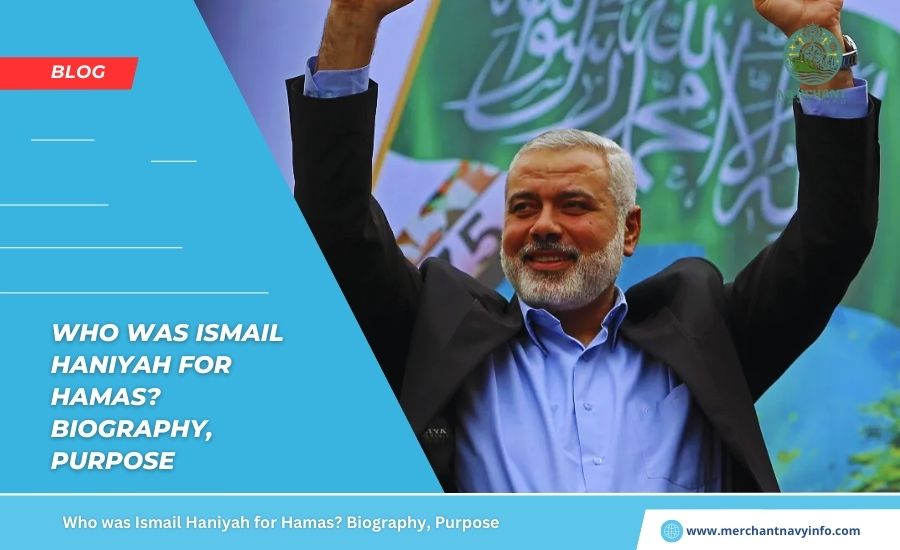
Who was Ismail Haniyeh for Hamas? Biography, Purpose,
Ismail Haniyeh (born 1962 in the Beach refugee camp in the Gaza Strip and died on July 31, 2024, in Tehran, Iran) was a Palestinian politician and Hamas leader who served as Prime Minister of the Palestinian Authority from 2006 to 2007. After Hamas won a majority of seats in the 2006 legislative elections.
Factional fighting with rival Fatah led to the dissolution of the government and the establishment of a Hamas-led independent government in the Gaza Strip. Haniyeh served as the de facto leader of the government in the Gaza Strip (2007-2014). In 2017, he was chosen to succeed Khaled Meshaal as head of the Hamas Political Bureau.
Early life and political activities
Hania’s parents were Palestinian Arabs who were displaced from their villages near Ashkelon (now Israel) in 1948. Further, spent his early life in the Beach refugee camp in the Gaza Strip, where he was also born.
As was customary for refugee children, Haniyeh was educated in schools run by the United Nations Relief and Works Agency for Palestine Refugees in the Near East (UNRWA). Providing food aid and medicine to camp residents.
n 1981, Haniyeh joined the Islamic University of Gaza, where he studied Arabic literature. He was also active in student politics, leading the Islamic Student Association, which was affiliated with the Muslim Brotherhood.
When the Islamist group Hamas was founded in 1988, Haniyeh was one of its young founding members. He developed close ties with the group’s spiritual leader, Sheikh Ahmed Yassin.
In 1988, Israeli authorities arrested Haniyeh for his participation in the First Intifada (an uprising against Israeli occupation) and imprisoned him for six months. He was arrested again in 1989 and remained in prison. Until he was deported by Israel to southern Lebanon in 1992 along with nearly 400 other Islamists.
Haniyeh returned to Gaza in 1993 after the signing of the Oslo Accords and was appointed dean of the Islamic University.
Prime Minister and Hamas leadership
Hamas Leeader: Ismail Haniyeh
Ismail Haniyeh, a senior Hamas figure and former prime minister of the Palestinian Authority (March 2006-June 2007), waves to his supporters during a Hamas rally in the Gaza Strip on December 15, 2007.
In 1997, Haniyeh became Sheikh Yassin’s personal secretary, solidifying his leadership of Hamas. He maintained a close relationship with the spiritual leader for the rest of Yassin’s life. The two were the targets of a failed Israeli assassination attempt in 2003. Although Yassin was assassinated a few months later.
In 2006, Hamas participated in Palestinian legislative elections, with Haniyeh coming out on top. The group won a majority in parliament, and Haniyeh became prime minister of the Palestinian Authority.
The international community responded to Hamas’ leadership by freezing aid to the Palestinian Authority. This placed significant financial pressure on the ruling body. In June 2007, after months of tensions, including armed clashes between factions. Fatah Party President Mahmoud Abbas dismissed Haniyeh and dissolved his government.
The confrontation resulted in the establishment of an independent Hamas-led government in the Gaza Strip, led by Haniyeh. Soon after, Israel imposed a package of sanctions and restrictions on the Gaza Strip, followed by Egypt. Israel tightened the blockade after rockets were fired from the Gaza Strip into Israel in January 2008.
However, Hamas still controls the Gaza Strip, and its rule has fluctuated between occasional political successes and setbacks. In terms of extracting concessions from Israel, Hamas succeeded in releasing more than a thousand Palestinian prisoners held by Israel in exchange for captured Israeli soldier Gilad Shalit.
A Bit of History
In addition, the Palestinian public generally considers Hamas’ performance in the summer of the 2014 war with Israel to be successful. But more importantly, the ongoing blockade has led to a significant deterioration in living conditions in the Gaza Strip.
At the same time, there have been several attempts at reconciliation between Hamas in the Gaza Strip and the Fatah-led Palestinian Authority in the West Bank. In 2014, the Hamas faction government in Gaza officially resigned to make way for a unity government with Fatah.
At this point, Haniyeh resigned as prime minister. However, he remained the local leader of Hamas in Gaza until he was replaced by Yahya Sinwar in 2017. A few months later, Haniyeh was elected chairman of the Hamas Political Bureau, replacing Khaled Meshal.
In December 2019, Haniyeh left the Gaza Strip and began living in Turkey and Qatar. Which allowed him to represent Hamas abroad. His most notable visits included the funeral of Qasem Soleimani, a senior Iranian Revolutionary Guard commander killed in a US drone strike in January 2020. The inauguration of Iranian President Ebrahim Raisi in August 2021.
Last months of Haniyaah
Haniyeh, who is in the process of withdrawing troops from Afghanistan, called Taliban leader Abdul Ghani Baradar to congratulate the United States on ending its presence in the country. In October 2022, Haniyeh met with Syrian President Bashar al-Assad, the first meeting between Hamas and a Syrian leader. Since Hamas severed ties during the Syrian uprising.
During the Israel-Hamas war, Haniyeh led a Hamas delegation to negotiations brokered by Qatar and Egypt. In April 2024, three of Haniyeh’s sons and four of his grandsons were killed in an Israeli attack during a round of ceasefire negotiations.
In May, the ICC prosecutor announced that he would seek arrest warrants for war crimes and crimes against humanity against Haniyeh, Sinwar, and Hamas leader Mohammad Dave. As well as Israeli Prime Minister Benjamin Netanyahu and Israeli Defense Minister Yoav Galant.
In July 2024, Haniyeh was killed by a remote explosive device planted two months earlier by an Israeli covert operation while visiting Tehran for the inauguration of Iranian President Masoud Pezeshkian.









